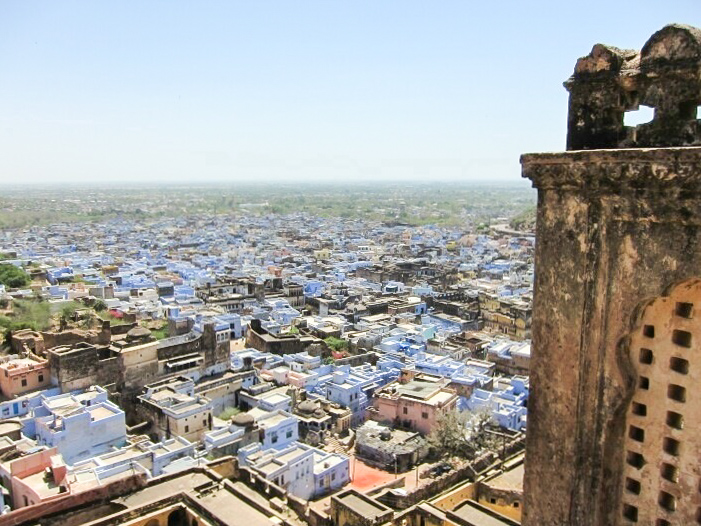Nestled in the heart of Rajasthan, Bundi is a hidden gem often overlooked on the typical tourist circuit.
We stopped here on our way from Ranthambore Park en route to Udaipur. What was initially going to be an overnight stay turned into a multi-day visit.
Since arriving in India, we’d been on the go non-stop and realized we needed a break. After exploring the hectic cities of New Delhi and Agra, it was a relief to have a reprieve in a small town. Bundi’s population is around 100,000 people (with the same ratio of cows to people, of course.)
One of Bundi’s most iconic landmarks is Taragarh Fort, an impressive structure offering panoramic views of the town. Within the fort is Bundi Palace (Garh Palace), a historic complex containing various halls, pavilions and courtyards. Among them, Chitrashala is a gallery of vibrant, well-preserved frescoes depicting scenes from Hindu mythology.
As we wandered the palace complex, we imagined life for the royal families who once lived there.
In medieval Rajasthan, the Hada Chauhan, a prominent Rajput clan, ruled throughout northwestern India.
Known for their valor, military prowess, and patronage of the arts, Taragarh Fort and Bundi Palace are testaments to the architectural contributions they made to the region.
Since Bundi is under the tourist radar, we had the entire site to ourselves – except for a few curious monkeys. We marveled at the centuries-old details like the decorative elephant pillars and vibrant mural paintings.
After the fort and palace, more intriguing sites awaited in town.
Bundi is filled with ramshackle small businesses ranging from convenience stores to internet shops to laundromats. Festively decorated tractors and tuk-tuks lined up alongside countless motorcycles. As people ran errands, we passed sleeping dogs and ever-present roaming cows.
A small, wildly colorful Hindu temple caught our eye. Climbing the steps, we took in the “mandapa,” the pillared outdoor pavilion, a kaleidoscope of ornate designs. It never ceased to amaze us how many structures like that exist in India. Elaborate structures that are simply part of the everyday landscape.
Another incredible site is Raniji ki Baori (Queen’s Stepwell), an intricately designed stepwell. Adorned with detailed carvings, it’s not only a stunning example of ancient Indian water storage systems but an architectural mastepriece.
Additionally, Chaurasi Khambon ki Chhatri (84 Pillared Cenotaph) is an impressive dome-shaped pavilion featuring 84 unique and intricately carved pillars. Originating in Mughal architecture, the semi-open “chhatri” serves as a decorative canopy above tombs. The most famous chhatri is the Taj Mahal. Here, Brian befriended a local boy eager to partake in our picture-taking (a common request we got in India.)
Outside Bundi, we visited a picturesque lake and yet another palace.
Nawal Sagar is an artificial lake surrounded by temples, step wells and “havelis,” which are traditional mansions or residences.
On the periphery, Sukh Niwas is a historic palace that once served as a royal residence. It’s commonly associated with legendary poet-saint Meera Bai, a devotee of Lord Krishna, who composed a variety of devotional songs.
But of all our amazing, unexpected Bundi experiences, our favorite memory was hanging out with our guesthouse owner, Eddie. Every morning, Eddie made us breakfast – usually porridge with bananas and coffee. We’d then spend a few minutes talking about everything from friendship to hobbies to nature and more.
In the evenings, he’d make us dinner and we’d chat some more. It’s because of Eddie that Baigan Bharta, a roasted eggplant dish, became one of our favorite Indian meals. One afternoon, he invited us to hang out with his extended family. We gathered on the steps outside his home as children entertained us with their playful antics, interrupted every now and then by a wandering cow.
Time seemed to move slower that afternoon, and for an hour or so, we didn’t really feel like outsiders. Through conversation and laughter, we connected in a way that seemed to transcend our vastly different backgrounds. Casting off the labels of “tourist” and “local,” we instead, existed only as humans – once strangers, now friends.

